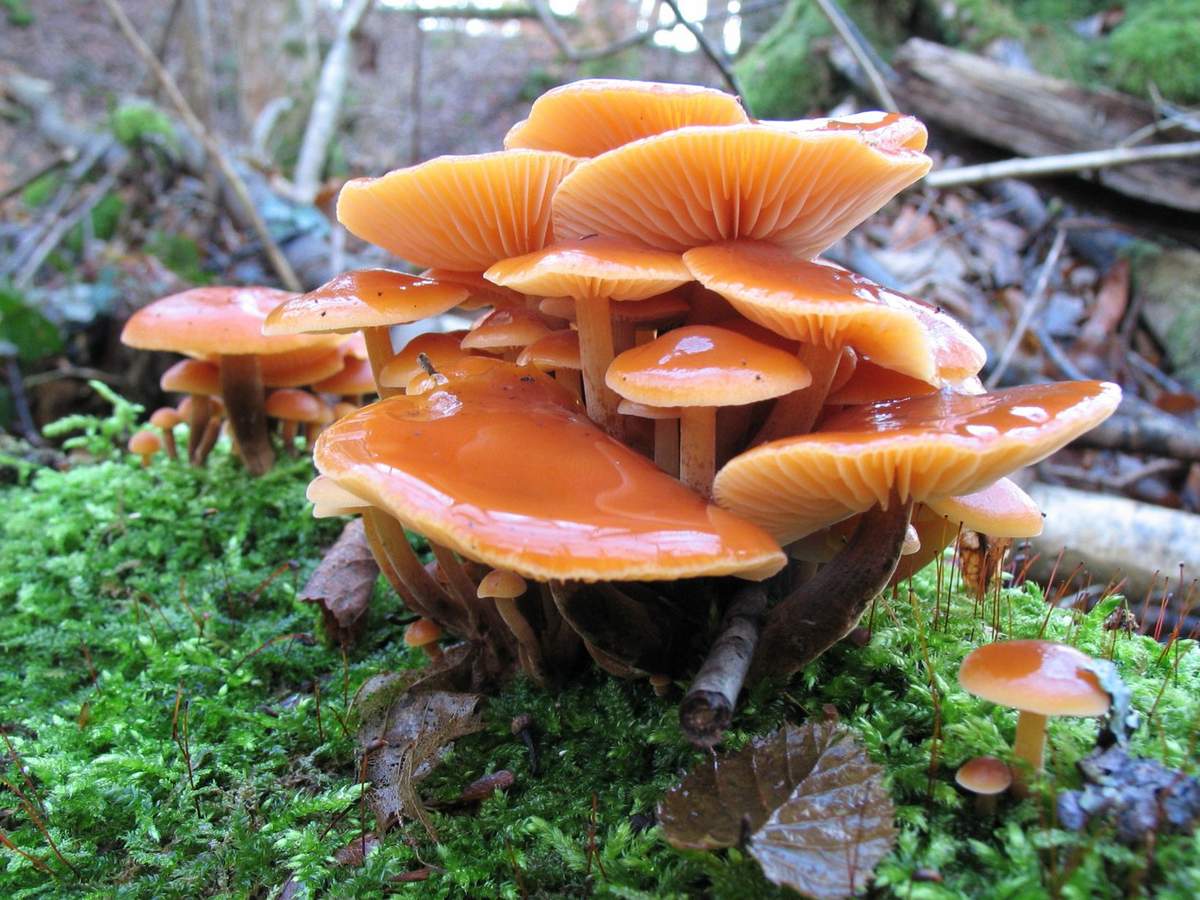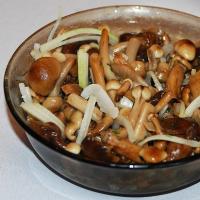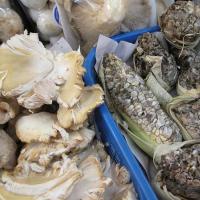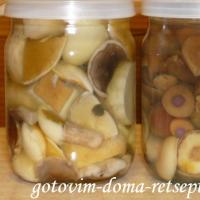Winter mushroom - a mushroom from under the snow
Winter honey agaric is a fungus belonging to the genus Flammulina, the Fizalakriye family.
The Latin name for this fungus is Flammulina velutipes.
It is also called velvety-legged collibia, velvet-legged flammulina, enokitake, or winter mushroom.
Description of winter honey agaric
The cap diameter is 2-10 cm. The fruiting body is cap-shaped. Hats in adults are flat, while in young ones they become convex. The color of the cap is yellowish, orange-brown or honey-brown. The edges of the cap are lighter than its middle.
The stem is located in the center of the cap. Its length ranges from 2 to 7 centimeters, the diameter of the leg is 0.3-1 centimeter. The leg is cylindrical, tubular, dense. The color is velvety brown, and at the top of the leg is a red-brown hue.
![]()
The flesh of the cap is thin, its color varies from white to light yellow. The pulp has a pleasant taste. The plates adhere to the hat, sometimes they can be shortened. The color of the plates ranges from white to ocher. There is no rest of the cover on the leg. Spore powder is white. The shape of the spores can be from cylindrical to elliptical.
Places of growth of honey agaric winter
They can also settle on dead wood. Most often, winter mushrooms can be found on willows and poplars growing on forest edges, on the banks of streams, in gardens and parks.
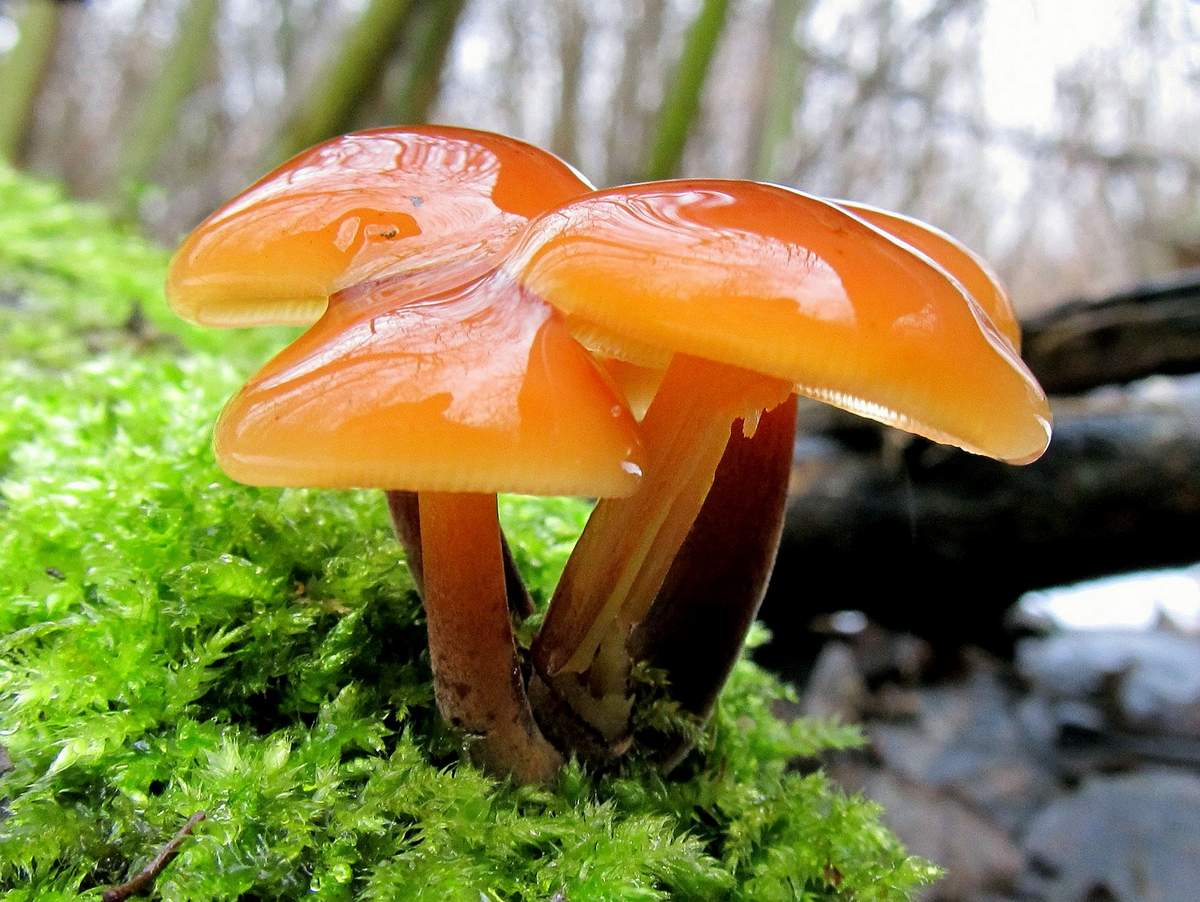
The harvest season is in autumn-spring. Winter mushrooms bear fruit in large groups. Some of them can be found in a fused form. These mushrooms continue to grow in winter during the thaw, which is why they are called "winter". Often they can be found under the snow cover.
Edibility of honey agaric winter
Winter mushrooms can be consumed fresh, boiled, salted and pickled. By taste, this mushroom belongs to the 4th category.
In young specimens, it is necessary to cut off the dark parts of the legs, and in old mushrooms, only caps are used for food. When boiled, winter mushrooms become slippery. They tolerate freezing well without losing their taste characteristics.
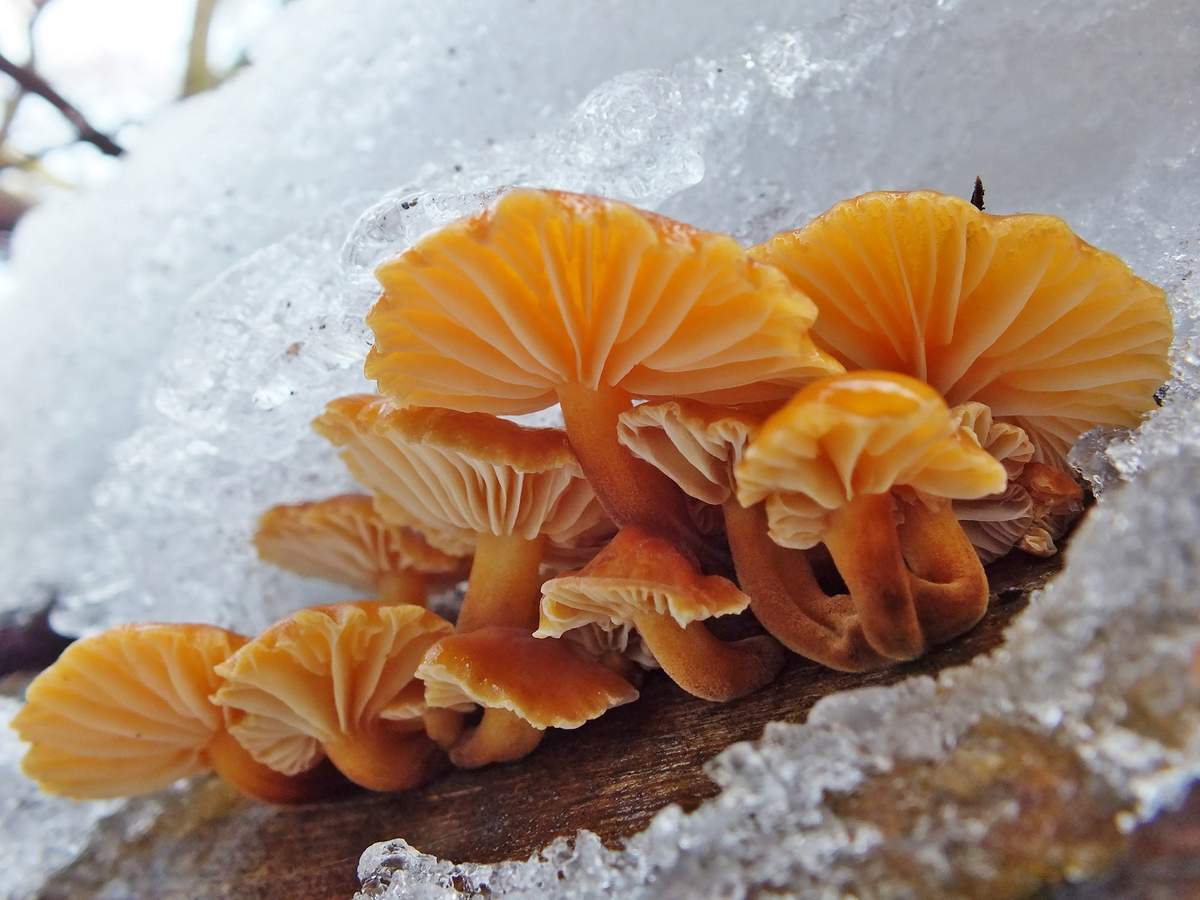
Therefore, you can safely collect frozen or thawed mushrooms in the forest. These mushrooms are most popular in Japanese traditional cuisine. In the very pulp of winter mushrooms there is a small amount of unstable toxins, and therefore they must first be boiled for 20 minutes.
Medicinal properties of winter mushrooms
Scientists have found that winter mushrooms contain a special substance called flammulin. This substance has a therapeutic effect, it helps to prevent the formation of sarcoma.
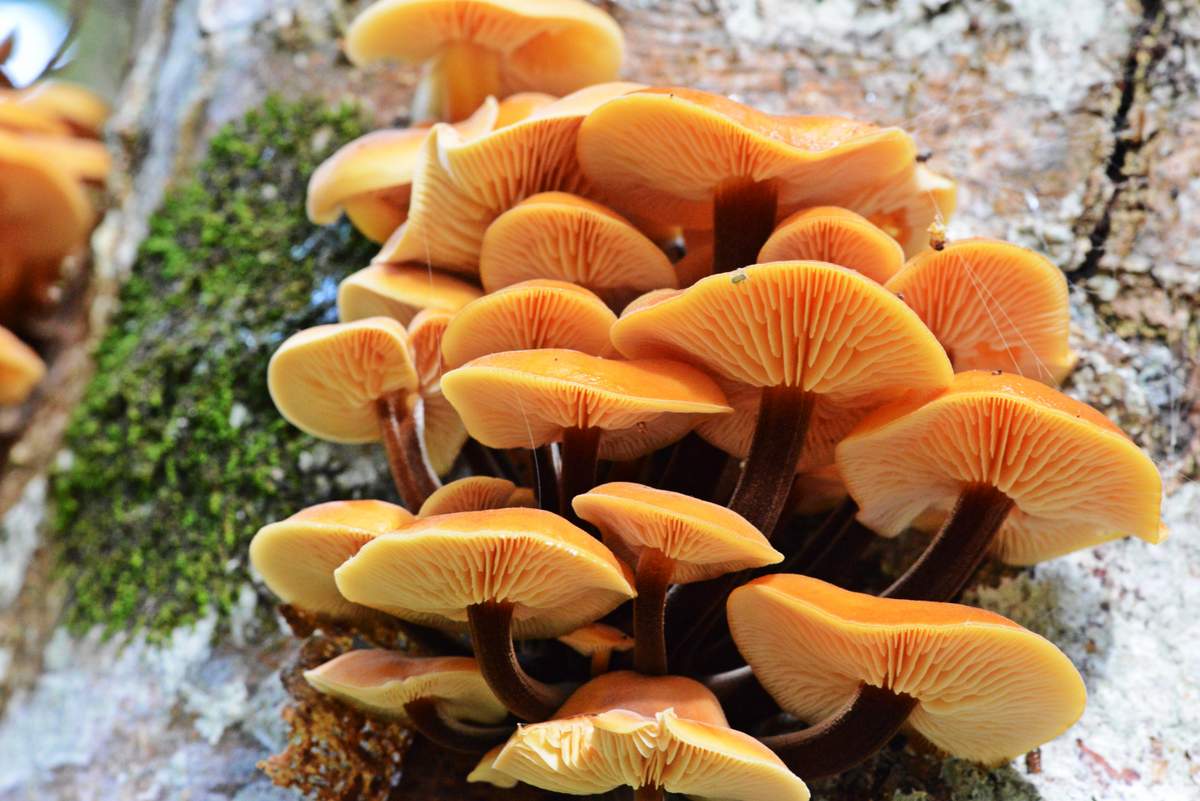
Cultivation of winter mushrooms
These mushrooms are cultivated on an industrial scale in Korea and Japan. Winter mushrooms are grown on specially moistened wood or on wheat straw. The harvest of artificially grown winter mushrooms can be harvested all year round, but for this it is necessary to maintain the temperature regime. The volume of production of winter mushrooms on a global scale is approximately 100 thousand tons per year.
Other mushrooms of this genus
There are quite a lot of mushrooms in the Flammulin genus:
Chased honey agaric - unlike other types of mushrooms, this is a rather rare and inedible species. These mushrooms grow from August to September, in the forests of some European countries, in addition, these mushrooms are found in the Moscow, Leningrad and Tomsk regions;
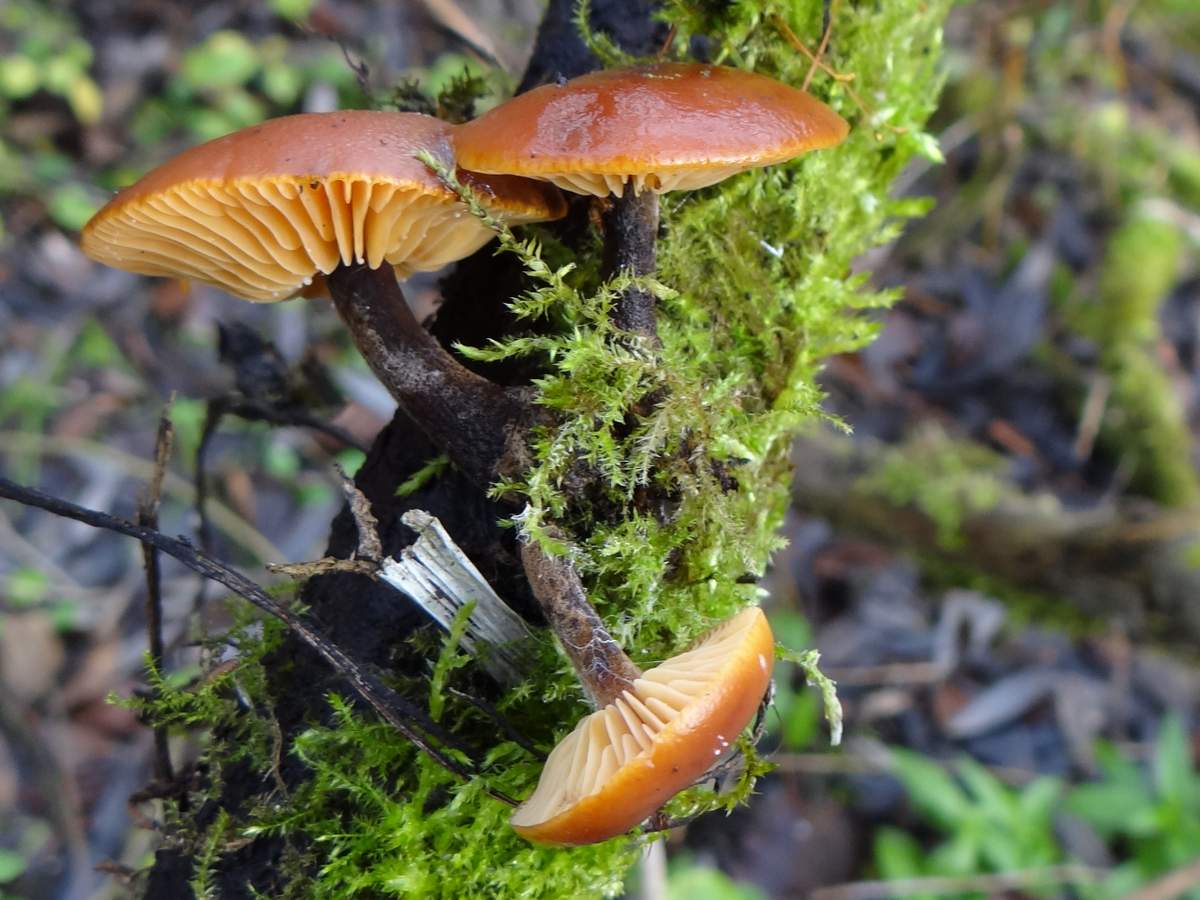
The dark mushroom grows in mixed forests rich in rotting wood. This is an edible mushroom, which outwardly bears a strong resemblance to the autumn mushroom;
Candola honey agaric bears fruit from spring to early autumn. These mushrooms are found on the roots and stumps of deciduous trees. They bear fruit in large groups. In modern literature, candola mushrooms are classified as edible mushrooms that need to be boiled beforehand, but earlier they were considered inedible and even poisonous;
Honey agaric gray-lamella is a typical tree fungus that grows in coniferous forests mainly on spruces and pines. These mushrooms can be harvested from spring to autumn and are not uncommon in mild winters;
Honey agaric is a versatile edible mushroom that is suitable for any type of cooking. Meadow mushrooms are harvested from summer to the end of October. They bear fruit in abundant rings on the edges, in forests, meadows and gardens;
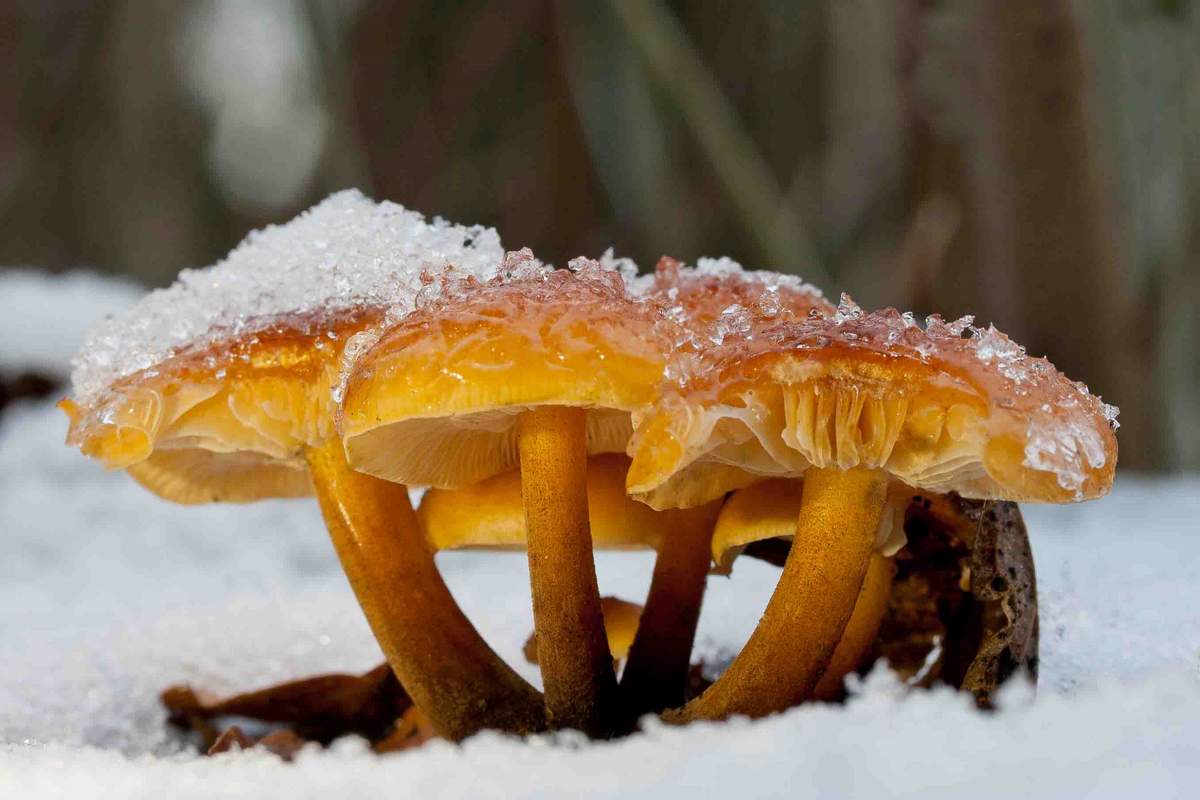
Summer honey agaric is an edible mushroom that grows on rotting wood. They grow on deciduous trees, most often on birches, and rarely come across on coniferous trees. Fruiting time from June to October;
Brick-red honey agaric can be found from summer to autumn on stumps and deadwood of deciduous trees. Information about the edibility of these mushrooms is contradictory;
Sulfur-yellow honey agaric is a fungus that is ubiquitous from May to late autumn, growing in large groups on rotting wood, mostly coniferous. These are inedible or slightly poisonous mushrooms;
Honey agaric gray-lamella is a good edible mushroom, reminiscent of summer honey agaric in taste. These mushrooms bear fruit from August to October, meeting on stumps, next to old trees and on decaying roots;
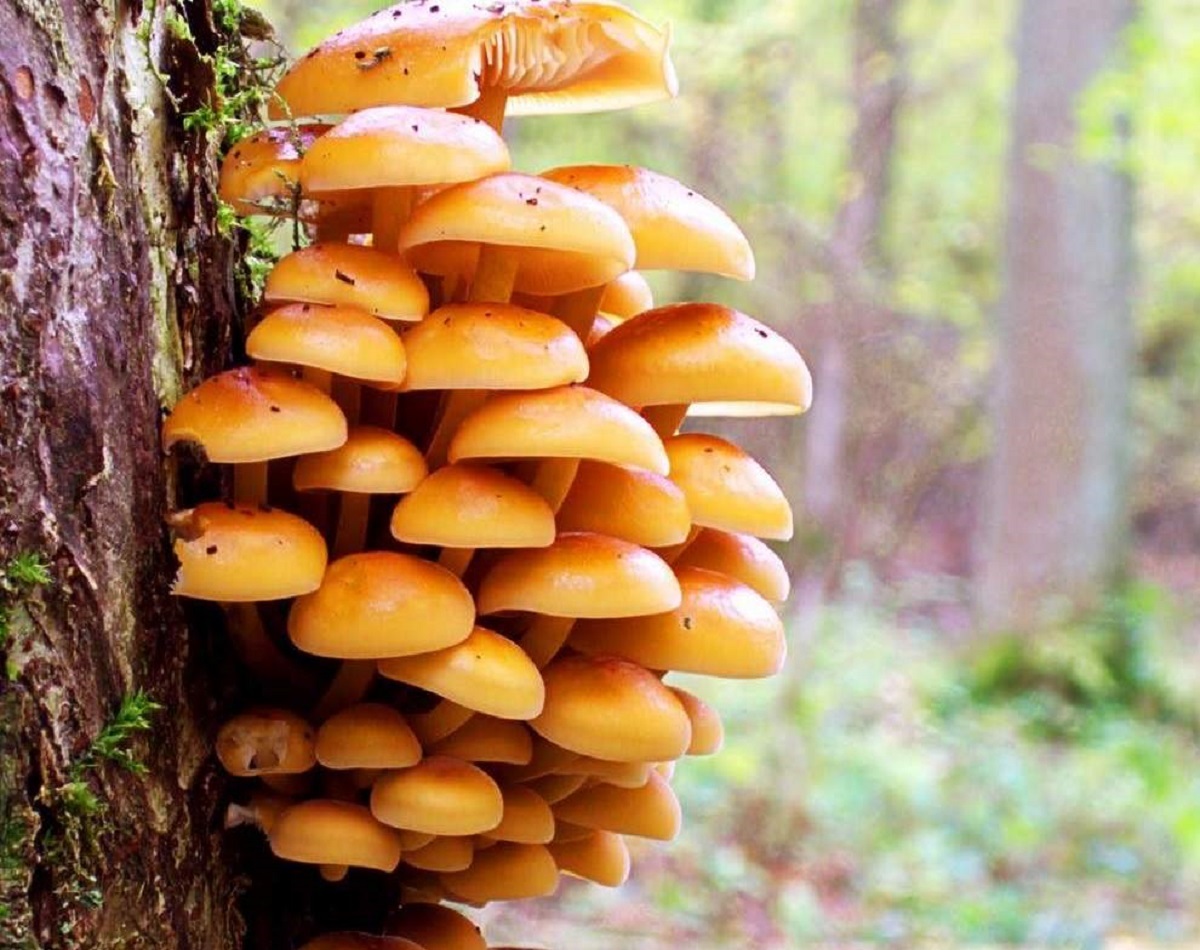
Autumn mushrooms can be collected from August to October. These mushrooms grow on both dead wood and living trees, with a preference for hardwoods, usually birch. They bear fruit in waves up to 15 days, 1-2 waves pass a year, during this period autumn mushrooms can be found in large quantities. These are edible, tasty mushrooms, but need some heat treatment, they can be fried, pickled, boiled, salted and made into a powder for soup;
Thick-legged honey agaric is one of the most popular mushrooms, which is harvested on an industrial scale. Thick-legged mushrooms grow from August to October, but sometimes come across as early as July. They can be found on rotting wood residues and on the soil. Unlike their counterparts, these mushrooms, as a rule, do not settle on living trees. On the soil, they grow in large circles, but do not grow together.
